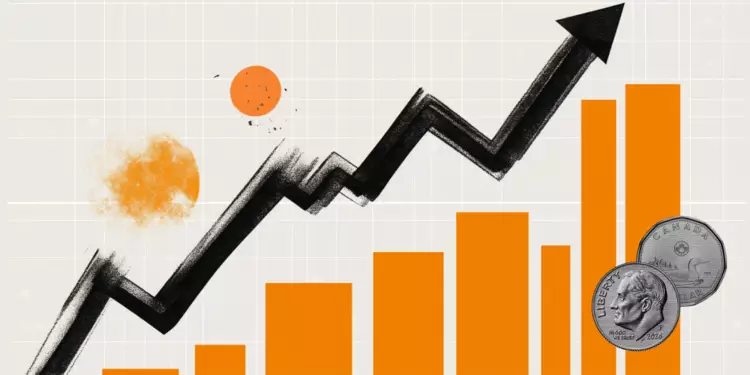The foreign exchange market has seen a notable rebound for the USD/CAD pair, which surged to approximately 1.4105 during the early Asian trading hours this Thursday. This resurgence stems primarily from a significant announcement by U.S. President Donald Trump, indicating a 90-day reprieve on new tariffs for key trade partners. This move is perceived by many as a diplomatic gesture aimed at facilitating constructive negotiations. It’s essential to recognize how geopolitical events can dramatically impact currency valuations and market sentiment.
The announcement of a tariff freeze aims to alleviate the tensions that have plagued international trade, allowing traders to recalibrate their positions in a climate historically fraught with uncertainty. Commenting on this development, market analysts like Mark Hackett from Nationwide note that the pause signals productive talks, injecting stability into markets that have been volatile. Importantly, Trump’s decision to delay higher tariffs reflects an attempt to foster trade relations rather than escalate tensions.
Inflation and Interest Rates: A Delicate Balance
The upcoming U.S. Consumer Price Index (CPI) report for March remains a critical focus for traders. Expectations are set for a headline CPI increase of 2.6% year-on-year, while core inflation, which excludes volatile food and energy prices, is projected to rise by 3.0%. The intricacies of these inflation metrics are profound, as they play a crucial role in determining the Federal Reserve’s monetary policy trajectory.
Interestingly, despite a backdrop of volatility, the market assigns only a 40% probability of a Fed rate cut in the near future. This seemingly cautious optimism indicates that traders are interpreting the macroeconomic landscape with a mixture of vigilance and hope. Rising inflation often prompts central banks to consider rate hikes, maintaining their role as proactive guardians of economic stability. This dynamic creates a delicate balancing act—while inflation can be a boon for asset values, excessive inflation can undermine purchasing power and economic growth.
The Oil Factor: A Catalyst for CAD Strength
Another salient player in the dynamics of USD/CAD trading is crude oil prices. Given that Canada is the largest oil supplier to the United States, fluctuations in oil prices tend to yield immediate and noticeable effects on the Canadian Dollar (CAD). A recovery in crude oil prices could bolster the CAD, as demand for the Canadian currency typically rises in tandem with higher oil values.
Investors keenly observe these fluctuations due to their pivotal influence on Canada’s trade balance—a metric that assesses the disparity between exports and imports. A favorable trade balance, facilitated by robust oil prices, can fortify the CAD against other currencies. As oil price movements are often driven by global supply and demand metrics, CAD traders must remain vigilant to broader economic indicators that influence oil prices.
The Bank of Canada’s Role in Currency Valuation
The Bank of Canada (BoC) exerts substantial influence over the CAD through its interest rate policies. By adjusting rates, the BoC helps maintain inflation within its target range of 1-3%. Higher rates can enhance the CAD’s attractiveness to foreign investors, inviting capital inflows—essentially making bread-and-butter decisions at a macroeconomic level shape the broader currency landscape.
Additionally, the BoC employs quantitative easing and tightening to modulate credit conditions, which further complicates the interplay between domestic monetary policy and global market sentiment. The dynamics between interest rates and inflation are critical. As global investors flock to currencies perceived as safer during uncertain economic climates, a stable or rising Canadian economy typically bolsters the CAD.
Economic Indicators: The Pulse of the CAD
Broad economic health is intrinsically tied to the strength of the CAD. Core indicators such as GDP growth, manufacturing activities, employment rates, and consumer sentiment surveys offer invaluable insights into the economic landscape. When the economy exhibits strength, it not only attracts foreign investment but can also prompt the BoC to consider rate hikes, consequently supporting the CAD.
Conversely, weak economic data can sap investor confidence and lead to a decline in the CAD’s value. The current market landscape emphasizes the necessity for traders to closely monitor economic indicators, as even minor shifts can induce significant currency fluctuations.
In summation, understanding the intricate relationships between political decisions, economic indicators, and commodity prices is vital for successfully navigating the complexities of the USD/CAD currency pair. Staying attuned to these multifaceted dynamics not only empowers traders to make informed decisions but also positions them to seize lucrative opportunities in the ever-evolving forex market.

